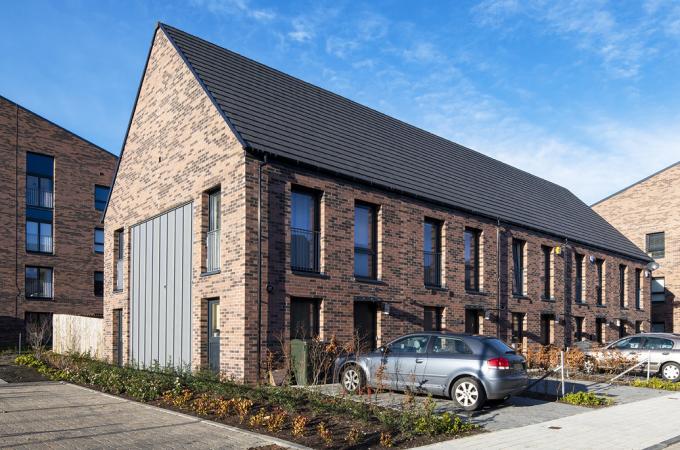Analyzing Gregor Robertson's Affordable Housing Plan: A Critical Evaluation.

Table of Contents
Key Pillars of Gregor Robertson's Affordable Housing Strategy
Gregor Robertson's affordable housing strategy rested on several key pillars aimed at increasing the supply of affordable housing and supporting vulnerable populations. These pillars included significant investments in rental housing initiatives, expansion of social housing, and the implementation of targeted homelessness strategies.
Rental Housing Initiatives
Robertson's administration implemented several programs to boost the supply of rental housing and improve affordability. These included:
- Rental Construction Incentives: Financial incentives were offered to developers to encourage the construction of new rental units. These incentives varied, including tax breaks, expedited permitting processes, and density bonuses. However, the effectiveness of these incentives in creating truly affordable rental units is debated, with concerns that many resulting units remained beyond the reach of low-income residents.
- Rent Control Measures: Existing rent control regulations were maintained and, in some cases, strengthened to protect tenants from excessive rent increases. While this protected existing tenants, it potentially discouraged new rental construction by limiting potential returns for developers.
- Inclusionary Zoning: This policy required developers of new residential projects to include a certain percentage of affordable units. However, the percentage requirements and definitions of "affordable" often varied, resulting in inconsistent levels of affordable housing creation.
Funding for these initiatives came from a mix of municipal, provincial, and federal sources, as well as partnerships with non-profit organizations and private developers. The success rate in achieving affordability goals varied greatly depending on the specific program and market conditions. A comprehensive evaluation of the long-term impact of these programs on rental affordability is still needed.
Social Housing Expansion
The plan also aimed to expand social housing, targeting vulnerable populations such as low-income families, seniors, and individuals experiencing homelessness. This involved:
- New Construction: A number of new social housing units were built during Robertson's tenure, though the precise numbers are subject to ongoing debate and require further investigation to determine if they met the growing needs of the city.
- Renovation and Repair: Existing social housing units were also renovated and repaired to improve their quality and extend their lifespan. This contributed to maintaining a stock of affordable housing, but fell short of addressing the significant need for new units.
- Targeted Support Services: Social housing developments often incorporated support services such as childcare, health clinics, and job training programs. This holistic approach attempted to address the multiple needs of residents.
The adequacy of funding for social housing expansion remained a persistent challenge, leading to lengthy waitlists and ongoing concerns about the long-term sustainability of these projects.
Homelessness Strategies
Addressing homelessness was a crucial component of Robertson's affordable housing strategy. Initiatives included:
- Increased Shelter Capacity: The city invested in increasing the number of shelter beds and expanding support services for individuals experiencing homelessness.
- Supportive Housing Programs: These programs provided housing combined with case management and support services to help individuals transition out of homelessness.
- Targeted Outreach Programs: Outreach workers actively engaged with individuals experiencing homelessness, connecting them to services and resources.
While these strategies contributed to a decrease in visible homelessness in some areas, the overall effectiveness in reducing chronic homelessness and improving long-term housing stability needs further evaluation. The integration of homelessness strategies with broader affordable housing goals requires continued attention.
Challenges and Shortcomings of the Plan
Despite its stated aims, Gregor Robertson's Affordable Housing Plan faced significant challenges and shortcomings.
Insufficient Funding
A persistent challenge was inadequate funding for affordable housing projects. This led to:
- Funding Gaps: Many proposed affordable housing projects were delayed or cancelled due to insufficient funding.
- Limited Project Scope: Funding constraints often resulted in smaller-scale projects than originally envisioned, limiting their overall impact on affordability.
- Comparisons with Other Cities: Vancouver's per capita investment in affordable housing lagged behind many comparable cities, highlighting the need for increased financial commitment.
Impact of Development and Gentrification
Paradoxically, development initiatives intended to increase housing supply also contributed to gentrification and displacement of existing affordable housing:
- Rising Rents and Property Values: Increased demand driven by new development led to rising rents and property values, pricing out long-term residents.
- Displacement of Low-Income Residents: Many low-income residents were forced to relocate to more distant and less desirable neighborhoods due to increased costs.
- Mitigation Strategies: While some mitigation strategies were implemented, they proved insufficient to fully offset the negative impacts of gentrification.
Bureaucratic Hurdles and Delays
Navigating the approval process for affordable housing projects often involved significant bureaucratic hurdles and delays:
- Lengthy Permitting Processes: The time required to obtain permits and approvals for new projects contributed to delays and increased costs.
- Regulatory Complexities: Complex regulations and bureaucratic procedures created obstacles for developers and non-profit organizations.
- Streamlining Solutions: Efforts to streamline the approval process were implemented, but further improvements are necessary to expedite project timelines.
Long-Term Impacts and Legacy
Assessing the long-term impacts of Gregor Robertson's Affordable Housing Plan requires a comprehensive analysis of changes in housing affordability and lessons learned.
Changes in Housing Affordability
Data on rent and home price changes since the implementation of the plan indicate a mixed outcome. While some progress was made in increasing the supply of rental housing, affordability continues to be a major concern. Comparing Vancouver's trends with other Canadian cities reveals that the challenges are not unique but rather reflect broader systemic issues.
Lessons Learned and Future Directions
The implementation of Robertson's plan provides valuable lessons for future strategies. These include:
- Prioritizing Increased and Sustained Funding: A significantly greater investment in affordable housing is crucial.
- Streamlining Regulatory Processes: Simplifying and expediting permitting processes is essential to encourage development.
- Comprehensive Approach: Addressing affordable housing requires a comprehensive strategy that considers the interplay of various factors.
Continued advocacy and action are vital to address the persistent challenge of affordable housing in Vancouver. Learning from both successes and failures of Gregor Robertson's Affordable Housing Plan is critical for the development of more effective strategies.
Conclusion
This critical evaluation of Gregor Robertson's Affordable Housing Plan reveals a complex picture. While some initiatives saw success in increasing rental housing supply and social housing units, significant challenges remain regarding funding, gentrification, and bureaucratic hurdles. The plan’s long-term impact on housing affordability needs further study. To effectively tackle Vancouver's ongoing affordable housing crisis, future strategies must build upon the lessons learned, prioritizing increased and sustained funding, streamlined regulatory processes, and a comprehensive approach that considers the intricate factors affecting housing affordability. Further research and a deeper analysis of Gregor Robertson's Affordable Housing Plan are vital to inform future policy decisions.

Featured Posts
-
 Deti Naomi Kempbell Foto I Podrobnosti O Predpolagaemom Romane Supermodeli
May 25, 2025
Deti Naomi Kempbell Foto I Podrobnosti O Predpolagaemom Romane Supermodeli
May 25, 2025 -
 Investing In Amundi Msci World Ii Ucits Etf Usd Hedged Dist Nav Explained
May 25, 2025
Investing In Amundi Msci World Ii Ucits Etf Usd Hedged Dist Nav Explained
May 25, 2025 -
 Dr Terrors House Of Horrors A Guide To The Thrills
May 25, 2025
Dr Terrors House Of Horrors A Guide To The Thrills
May 25, 2025 -
 Macrons Party Proposes Hijab Ban For Under 15s In Public Spaces
May 25, 2025
Macrons Party Proposes Hijab Ban For Under 15s In Public Spaces
May 25, 2025 -
 Zheng Qinwen Reaches Italian Open Semifinals A Detailed Match Analysis
May 25, 2025
Zheng Qinwen Reaches Italian Open Semifinals A Detailed Match Analysis
May 25, 2025
